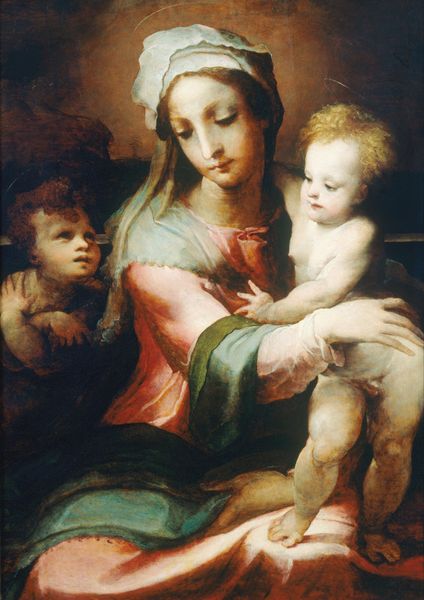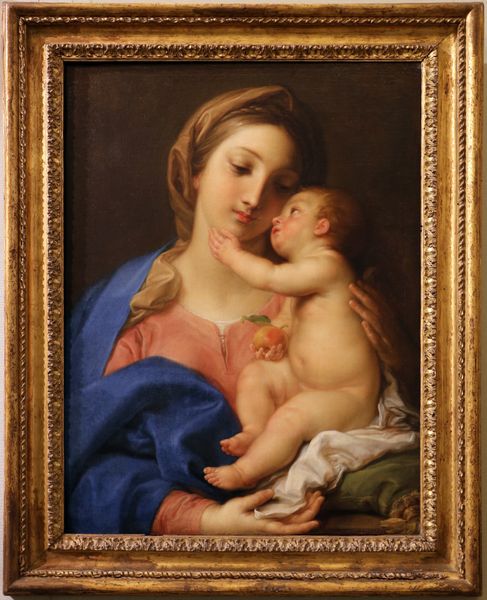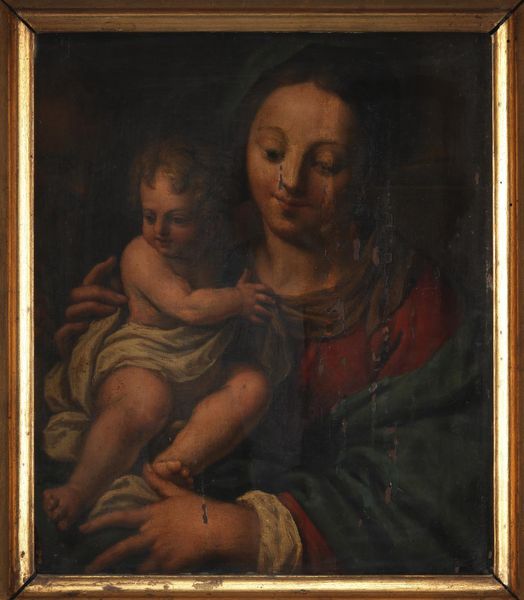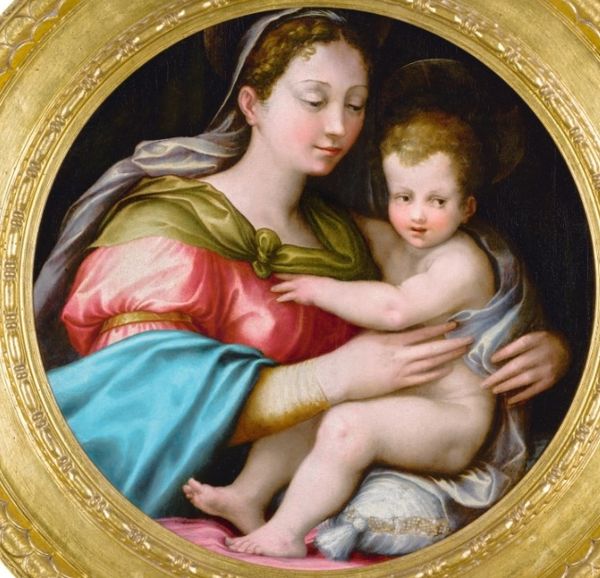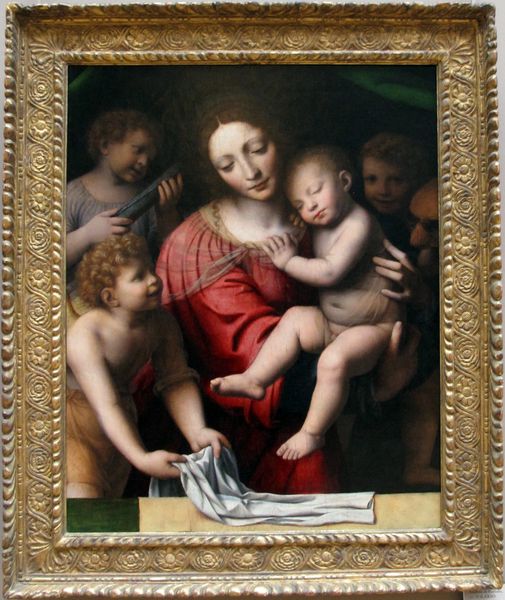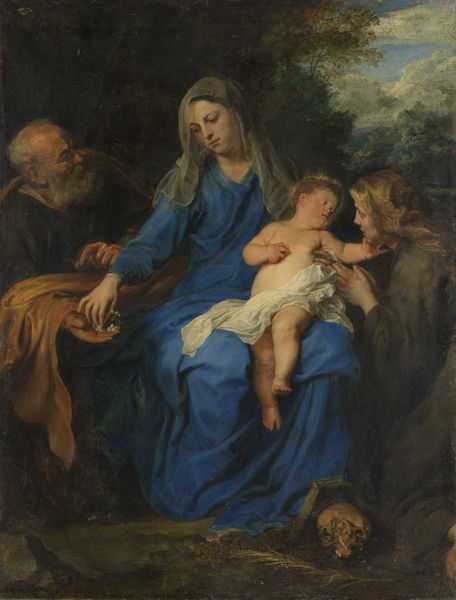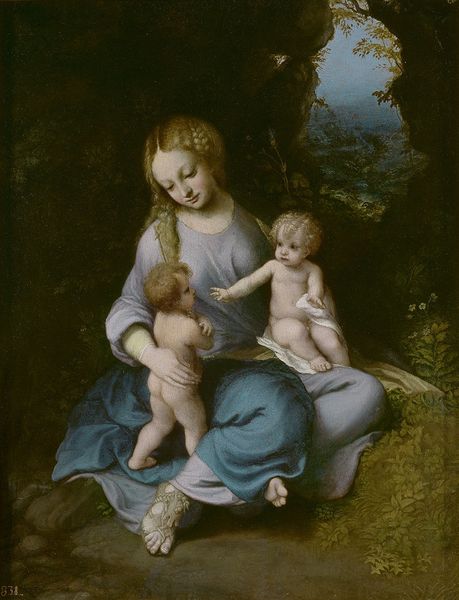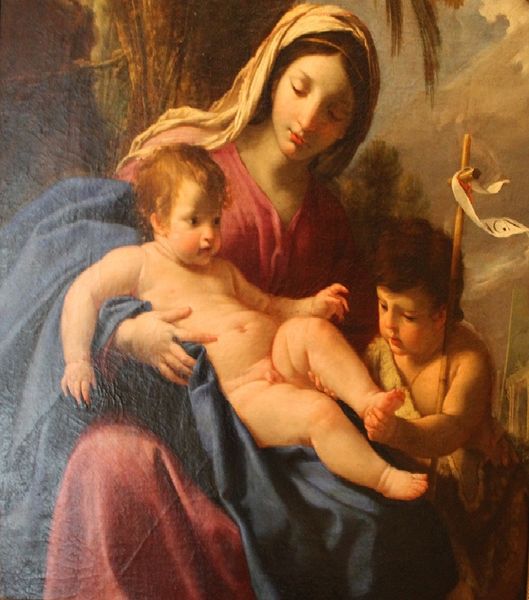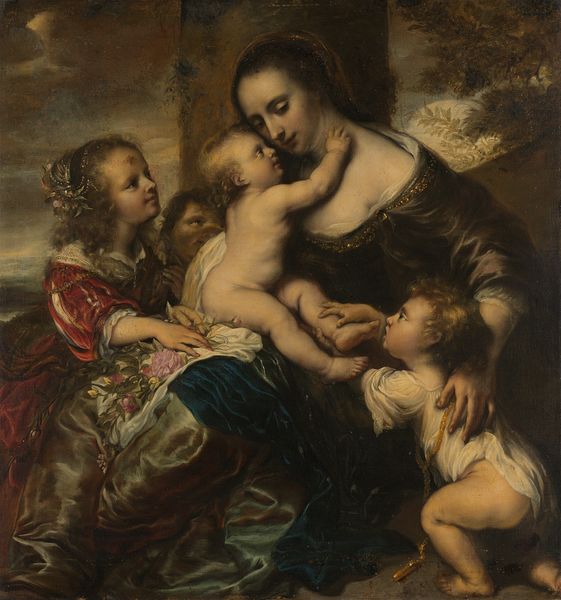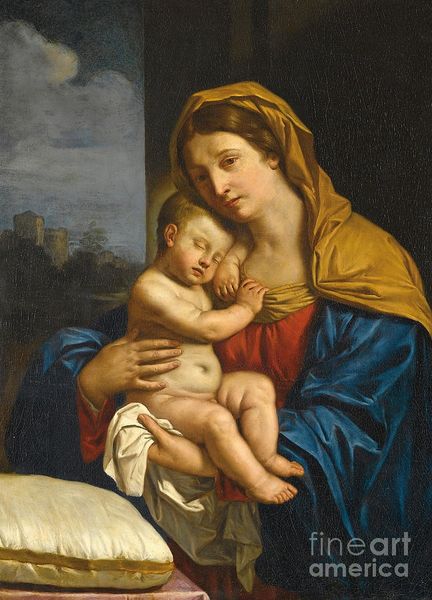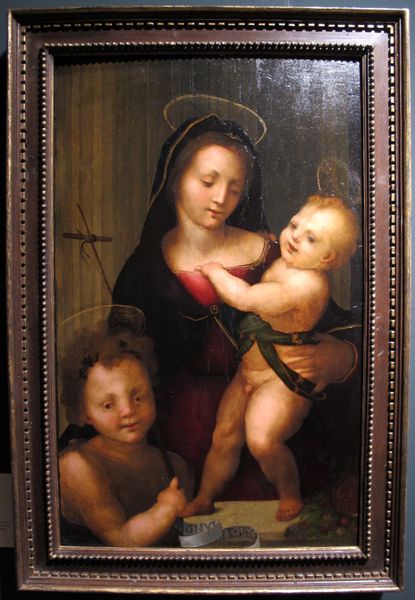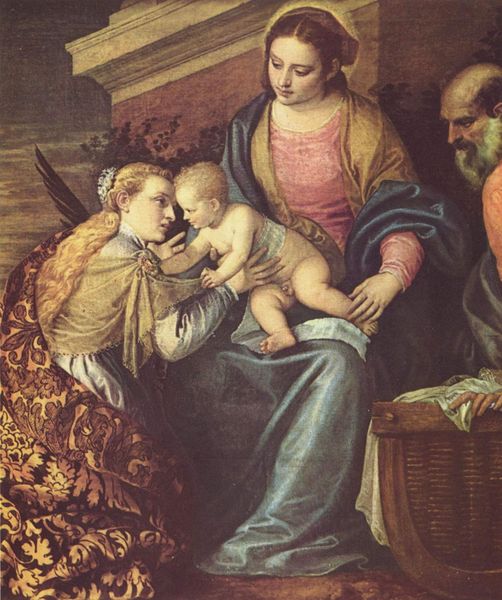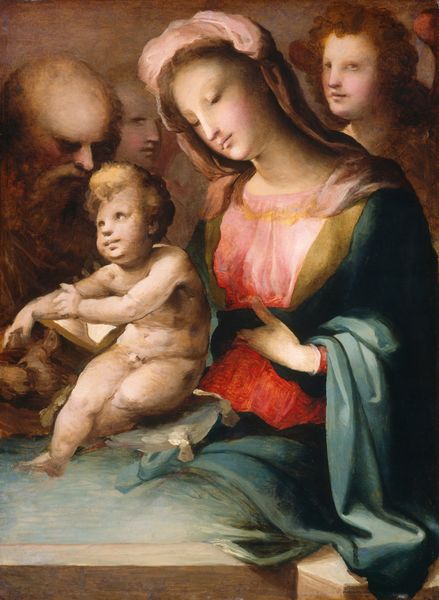
painting, oil-paint
#
portrait
#
baroque
#
painting
#
oil-paint
#
figuration
#
oil painting
#
history-painting
#
portrait art
Dimensions: 38 1/2 x 29 3/4 in. (97.79 x 75.57 cm) (canvas)50 1/4 x 41 1/4 x 4 in. (127.64 x 104.78 x 10.16 cm) (outer frame)
Copyright: Public Domain
Curator: This oil painting is "Madonna and Child," a Baroque piece created in 1711 by Carlo Maratti. Editor: My first thought is intimacy, though in a formal way, almost staged. The faces are beautifully rendered, but there’s something distant about the emotional connection. Curator: That tension is fascinating. Maratti, although working in the Baroque style, which often emphasizes dynamism and drama, seems to restrain himself here, seeking a calmer, more classical harmony. Look at the triangular composition—stable and balanced, anchored by Mary's blue robe and the angel looking on. Editor: The blues are indeed striking. The way he uses color to draw your eye across the canvas – from the Virgin’s robe up to the shadowy figures in the upper corner, and down towards the muted rose of her underskirt – it's expertly done, directing the gaze to where we see all players of a divine story being presented at once. It makes me consider who this work was commissioned for. It's not a church altarpiece, that’s clear to me! Curator: Art history indicates these paintings, though religiously themed, were likely made for domestic settings and intended for private devotion. Though subtle, this is what I see: It's both devotional, and it feels more relatable. Even cozy, right? Mary doesn't have the hardened exterior she's sometimes presented with in similar compositions, there is real comfort visible here, despite any divine intervention in her future. Editor: Definitely a less theatrical Madonna than some other Baroque interpretations. The figures feel solid, inhabiting a real space, even if that space is rather ambiguous and dark. Curator: What I always find amazing is Maratti's skill in blending idealised beauty with a sense of palpable human feeling. There is emotion there, simmering beneath the surface of formal composition. Editor: For me, it is his technical skill with the oil paint itself that draws me in. The detail is impressive – in both Mary's and the angel's hair, in their clothes, but especially in baby Jesus' plump little limbs. Curator: Looking at the artwork as a whole has me pondering on how it's aged and shifted over the centuries. We have evolved, society has changed and been challenged but we can always go back and feel something. This piece captures so many moments, and does not take away from all of these different stages of both my life and that of human development. Editor: And the enduring appeal lies in its very ambivalence, perhaps— a balance between serene formality and underlying humanity, making "Madonna and Child" continue speaking across the ages.
Comments
minneapolisinstituteofart about 2 years ago
⋮
Carlo Maratti, a preeminent painter in late 17th-century Rome, was nicknamed Carluccio delle Madonne, or Little Carlo of the Madonnas. He produced an endless variety of works depicting an idealized, comforting vision of the Virgin and Child. This chubby infant Christ, holding an apple, looks piously up toward God while his somber mother and an adolescent angel seem to contemplate his fate. The painting may be a very late work by Maratti—an old inscription on the back of the canvas dates it to 1711—or it may have been done by one of his many Roman followers.
Join the conversation
Join millions of artists and users on Artera today and experience the ultimate creative platform.
